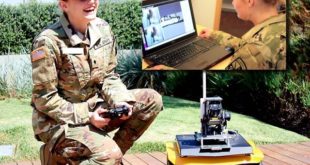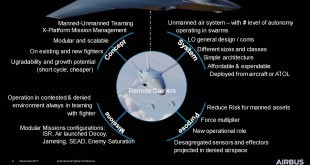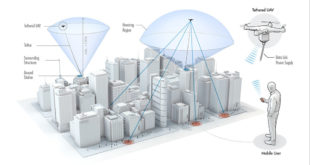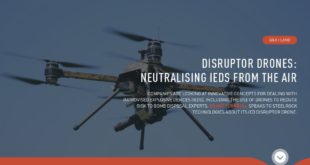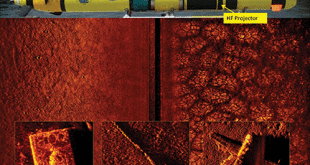Since fully autonomous UAS are still far off, the US Army has developed concept of Manned-unmanned teaming (MUM-T) for operation in A2/AD environments. Through MUM-T operations they expect to combine the strengths of manned and unmanned platform to increase situational awareness, allowing the armed forces to conduct operations that include …
Read More »US Army developing Manned-Unmanned Teaming ( MUM-T ) technologies in multiple domains for operation in A2/AD environments
US military is facing increasingly Anti-access /Area denial environment, a set of overlapping military capabilities and operations designed to slow the deployment of U.S. forces to a region, reduce the tempo of those forces once there, and deny the freedom of action necessary to achieve military objectives . Unmanned Air …
Read More »Rising employment of Unmanned and Autonomous underwater vehicle (UUV & AUV) in Naval ASW & MCM missions
UUVs—submersible unmanned vehicles—are divided into two categories: remotely operated underwater vehicles (ROVs) and autonomous underwater vehicles (AUVs). ROVs are controlled and powered by a person or crew on either land or neighboring craft via an umbilical or using remote control. The cables enable maneuverability of the ROV, allowing it to travel …
Read More »Drones integration into 5G cellular network can enhance coverage
Unmanned Aerial Vehicles, abbreviated as UAVs, are aircrafts without any human pilot onboard, mainly controlled and managed remotely or via embedded autonomous computer programs. UAVs are also popularly known as drones. Unique features of UAVs pertaining to high mobility in three-dimensional space, autonomous operation, flexible deployment tend to find appealing …
Read More »Countries developing Hybrid UAS/UGV delivering goods and for rescue missions intelligent transportation systems in smart cities.
There could be no smart city without a reliable and efficient transportation system. This necessity makes the ITS a key component of any smart city concept. While legacy ITS technologies are deployed worldwide in smart cities, enabling the next generation of ITS relies on effective integration of connected and autonomous …
Read More »DARPA’s underminer to develop tunneling robots and concepts for underground operations for emerging tunnel Warfare
Criminals, terrorists and military have been using tunnels since long time to evade detection as surface based detection methods are ineffective underground . There has been an explosion of underground warfare in the last five years. From sophisticated cross-border Hezbollah attack tunnels discovered in northern Israel to defensive tunnels that …
Read More »New UAV command and control technologies, satellite BLOS links and Multi-Domain Multi-Platform Drone Control
Unmanned Aerial Vehicle (UAV) is defined as a powered, aerial vehicle that does not carry a human operator, uses aerodynamic forces to provide vehicle lift, can fly autonomously or be piloted remotely, can be expendable or recoverable, and can carry a lethal or nonlethal payload. Unmanned aerial vehicles (UAVs) are …
Read More »Unmanned Aerial Systems emerging promising alternative for IEDs and Landmine detection and Disruptionr
Several countries suffer from the existence of millions of buried landmines in their territories. These landmines have indefinite life, and may still cause horrific personal injuries and economic dislocation for decades after a war has finished. Landmines, improvised explosive devices (IEDs), and other homemade bombs struck 6,461 people worldwide …
Read More »UNMANNED VEHICLE SYSTEMS & OPERATIONS ON AIR, SEA, LAND by Professor Randall K Nichols Director, Unmanned Aircraft Systems- Cybersecurity Graduate Certificate Program
UNMANNED VEHICLE SYSTEMS & OPERATIONS ON AIR, SEA, LAND By Nichols, R. K., Ryan, J., J.C.H., Mumm, H.C., Lonstein, W.D., Carter, C., Hood, J.P, Mai, R., Shay, J., & Jackson, M. ABSTRACT Unmanned Vehicle Systems & Operations On Air, Sea, Land is our fourth textbook in a …
Read More »Synthetic Aperture Sonar on Unmanned underwater vehicle (UUVs) and AUVs is transforming Mine Countermeasures and Undersea Warfare
SOund Navigation And Ranging or SONAR is a technique of distance measuring between detector and an object base on sound reflection. The distance can be calculated from propagation time and speed of sound in specific mediums. For military, Sonars are the eyes and ears of ships or submarines in water …
Read More » International Defense Security & Technology Your trusted Source for News, Research and Analysis
International Defense Security & Technology Your trusted Source for News, Research and Analysis
